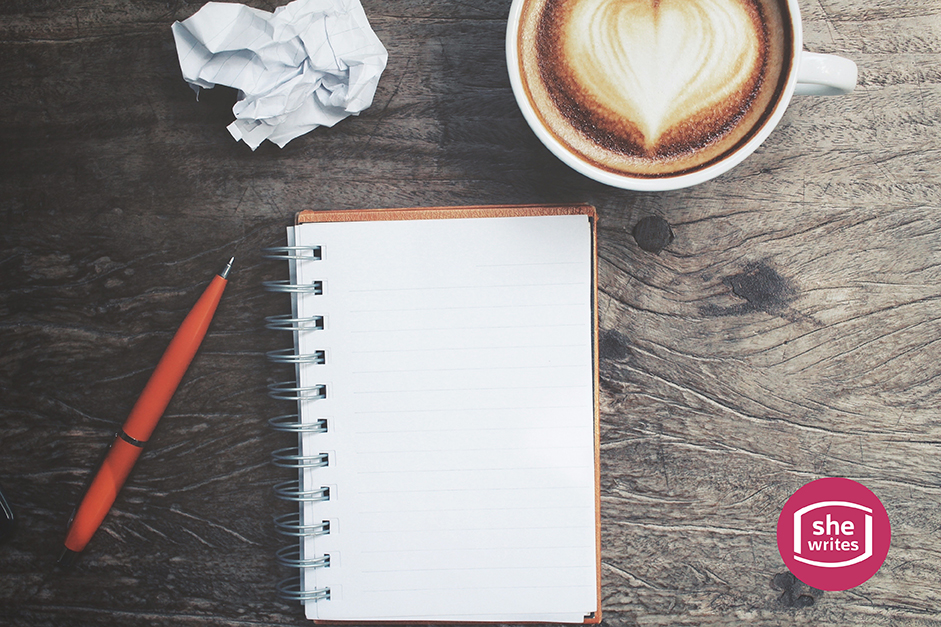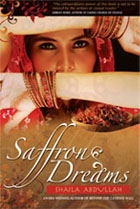Originally posted at Mother Nature Network:

 Shakespeare & Company bookstore in Paris has been open since 1919. (Photo: Christian Bertrand/Shutterstock.com)
Shakespeare & Company bookstore in Paris has been open since 1919. (Photo: Christian Bertrand/Shutterstock.com)
 Reading text in a digital format isn't always the best way to get all the information from a story. (Photo: smokingapples.com/Flickr)
Reading text in a digital format isn't always the best way to get all the information from a story. (Photo: smokingapples.com/Flickr)
Thank you all for visiting with us. It’s always a pleasure to meet readers and authors. Until next month, every one please stay safe. Smile. Be happy. Show compassion. Be nice to others. Put a little love into your heart. Please speak up for those without a voice, whether it be a dog, cat, elephant or monkey. One person, one voice can make a difference. Read a book and pass it on. Leave a review. Reviews are important for authors. Believe me. I know. Thank you!

And now for some legal stuff: Copyright 2018 by S.J. Francis. Opinions expressed here are solely those of the author, S. J. Francis and the guest author and are meant to entertain, inform and enlighten, and intend to offend no one.
Turns out all those dire predictions were wrong.

Don't ring the death nell for independent bookstores just yet. (Photo: Michael Voelker/Flickr)
I love books, and to an irrational degree.
In books, I find psychological and emotional refuge, education and deep wisdom that I just don't find elsewhere. My passion is connected to the words and the form they come in — printed pages bound together. So I'm not afraid to admit that when I read an article about how print book sales had risen (modestly) and e-book sales had declined (a bit) and that the number of independent bookstores had increased over the past year, I shed tears of joy.
It wasn't that long ago that everyone was predicting the end of print and the demise of small bookstores. If people were reading, they were doing it digitally, and if they were buying paper books, they weren't getting them from independent shops. The future looked grim for small stores.
But more and more, we keep hearing about the resurgence of the independent bookstore and how print is not dying after all. As The New York Times reported in 2015, "While analysts once predicted that e-books would overtake print by 2015, digital sales have instead slowed sharply."
And one wonderful consequence of the changing market is that bookstores are slowly coming back.
"That's right. The phoenix rises from the ashes. According to the American Booksellers Association, there are now 2,321 independent bookstores in the United States," reported NPR's Paddy Hirsch in March 2018. "And there are a couple of things that happened to prepare the grind for this recovery. First, when Amazon came along, the independents were decimated, sure. But the corporates — the big-box stores and the chains — they really got crushed. Borders, for instance, went out of business altogether. So that left a gap for the indies to fill."
That's hundreds of new, independent bookstores, which is just plain exciting. (I love to find local booksellers whenever I'm in a new city or town, and I know I'm not alone in that regard.)
The good news started to turn around a few years ago. Plus, sales at independent bookstores were up about 9 percent in 2018 from the year before, according to the American Booksellers Association. Bookstores in the U.K. also are experiencing increased revenue. Nielsen Bookscan statistics show year-on-year growth of 22 billion GBP with 2018 book sales reaching 1.59 billion GBP, reported The Guardian.
"I think the worst days of the independents are behind them," Jim Milliot, coeditorial director for Publishers Weekly magazine, told the Christian Science Monitor in 2013. "The demise of traditional print books has been a bit overblown. Everybody is a little anxious, but they are starting to think they've figured it out for the time being."
Why people want print
 Shakespeare & Company bookstore in Paris has been open since 1919. (Photo: Christian Bertrand/Shutterstock.com)
Shakespeare & Company bookstore in Paris has been open since 1919. (Photo: Christian Bertrand/Shutterstock.com)
What media stories don't delve into are the reasons behind the stagnation in e-books and slight-but-real increase in demand for printed books. I don't think this is anything like the niche nostalgia that's driving vinyl record sales, which is still a tiny part of the huge music industry. Print book sales are still 80 percent of the market, the dominant form.
Could it be that, unlike music, there's a real decline in utility when you choose e-books over printed ones — and only a marginal gain in efficiency? Are printed books simply a superior format — as my friend David Lanphier Jr. commented on Facebook?
Yes, you can carry a number of books with you on an e-book reader, which is an undeniable bonus. But most of us are only reading a couple of books at a time, and it's not that hard to choose one or two books to carry around. For those who need larger print, e-readers are a definite win. If you live far from your local library, e-books are also a great solution.
And some people like looking up words, which is convenient with an e-reader. But in the days of smartphones, it's almost as easy to grab your phone to check, so I'd call that one a wash.
The physicality of paper books
But unlike music, printed books are far sturdier and more reliable than e-readers. Many of my books have been dropped into water, partially set on fire by candles or campfires, and I hardly own a book that hasn't had soup, coffee, tea, or water splashed on it. Printed books suffer all these indignities and more: Dogs chewing on them, toddlers throwing them out the car window, or use as a seat for butt protection against damp grass. All of those books are still readable.
You can take a biography to the seaside or read in the swimming pool as I'm wont to do without concern. You can throw a mystery in your backpack and take it to the top of the mountain and not care if it starts raining or your water bottle spills on it. You can keep reading in an Oregon drizzle and then dry that poetry out next to the fire. You can place a novel over your face and nap in the sunshine, breathing printer's ink and words. You can even use the pages of a memoir to mop up a bit of blood when you fall off your mountain bike and cut your knee. (What? You've never bloodied a book?)
You can't toss a terrible e-book across the room in frustration (cough, Nicholas Sparks, cough), and of course e-book publishers have made sharing titles nigh-impossible.
Of course, if you don't like clutter, e-books are great; but if you love books, lots of them stacked up is comforting. And the used book market is still a relatively strong one, so just sell them if you don't want to keep them around. You can then buy more books, something you can't do with electronic copies of books. I buy used books for $5-8 each, then sell roughly two-thirds of them back to the bookseller for $3-4 credit. So new used books only end up costing me a few bucks, or I can put my credit towards a new title, cutting the cost below that of an e-book copy. Unless you're buying new books all the time, I've found digital copies to be a significantly more expensive way to go.
 Reading text in a digital format isn't always the best way to get all the information from a story. (Photo: smokingapples.com/Flickr)
Reading text in a digital format isn't always the best way to get all the information from a story. (Photo: smokingapples.com/Flickr)
Besides being fragile, e-readers make scanning back into a book's content difficult, because your story memory is not tied to a physical object and "spot" within it. You have to remember a word or phrase from the section you want to find. When I'm writing an article with books as reference, I find e-readers impossible to use; same with looking up a favorite few lines for reference later in my journal. And it's not just because I didn't grow up a digital native; even those who have grown up with e-readers and tablets still prefer print, according to a survey by Canon that looked at Millennial habits around reading and even sending written notes.
And as Lanphier added to his Facebook comment about this topic, "...my 6 and 1/2 year old niece has an iPad, and she reads on it, but she will read a book too. And, will choose a book over the iPad reading... because a book has that experience. You don't see moms and kids and dads and kids gathered around the iPad reading together. But, you see them doing that with books."
Clearly, I'm thrilled books are here to stay. And it looks like the next generation will love their printed books just as I do.
Editors's note: This article has been updated since it was originally published in September 2015.
Thank you all for visiting with us. It’s always a pleasure to meet readers and authors. Until next month, every one please stay safe. Smile. Be happy. Show compassion. Be nice to others. Put a little love into your heart. Please speak up for those without a voice, whether it be a dog, cat, elephant or monkey. One person, one voice can make a difference. Read a book and pass it on. Leave a review. Reviews are important for authors. Believe me. I know. Thank you!
Regards,
S. J. Francis, Writing is my passion, but animals are my world.
Advocate for the underdog, and cat, and supporting writers, et al.
In Shattered Lies: "It's All About Family." Available now from Black Opal Books and for sale at all on-line retailers and independent booksellers.

S. J. Francis, Writing is my passion, but animals are my world.
Advocate for the underdog, and cat, and supporting writers, et al.
In Shattered Lies: "It's All About Family." Available now from Black Opal Books and for sale at all on-line retailers and independent booksellers.

Shattered Lies is a winner in the Fall 2016 NABE Pinnacle Book Achievement Awards for Women's Fiction.
Shattered Lies is a runner-up in the 2016 Shelf Unbound Indie Best Book Award Competition.
Shattered Lies is a 2016 Reader's Favorite Honorable Mention in the Fiction - Women’s category.
Shattered Lies was a Finalist in the 10th Annual National Indie Excellence Awards.
Shattered Lies was chosen as General Fiction Official Selection in the 2015 New Apple Book Awards.
Did you know that the first, original book cover design for Shattered Lies was a semi-finalist in the 2015 Authors dB Best Cover Contest?
My Black Opal Books Author Page:
http://www.blackopalbooks.com/author-bios/bio-sj-francis
Shattered Lies is a runner-up in the 2016 Shelf Unbound Indie Best Book Award Competition.
Shattered Lies is a 2016 Reader's Favorite Honorable Mention in the Fiction - Women’s category.
Shattered Lies was a Finalist in the 10th Annual National Indie Excellence Awards.
Shattered Lies was chosen as General Fiction Official Selection in the 2015 New Apple Book Awards.
Did you know that the first, original book cover design for Shattered Lies was a semi-finalist in the 2015 Authors dB Best Cover Contest?
My Black Opal Books Author Page:
http://www.blackopalbooks.com/author-bios/bio-sj-francis
Twitter: https://www.twitter.com/sjfrancis419
My Writing Blog: http://www.sjfranciswriter.blogspot.com
A Book Review 4 U: http://abookreview4u.blogspot.com
A Consumer's View: http://aconsumersview.blogspot.com
One for the Animals: http://onefortheanimals.blogspot.com
Pinterest: http://www.pinterest.com/sjfrancis419/
Google Plus: https://plus.google.com/u/0/104831238907682620486/about
Good Reads: https://www.goodreads.com/user/show/33550975-s-j
One for the Animals: http://onefortheanimals.blogspot.com
Pinterest: http://www.pinterest.com/sjfrancis419/
Google Plus: https://plus.google.com/u/0/104831238907682620486/about
Good Reads: https://www.goodreads.com/user/show/33550975-s-j

And now for some legal stuff: Copyright 2018 by S.J. Francis. Opinions expressed here are solely those of the author, S. J. Francis and the guest author and are meant to entertain, inform and enlighten, and intend to offend no one.









